Mothers Who Kill: Horror’s Killer Maternal Instinct
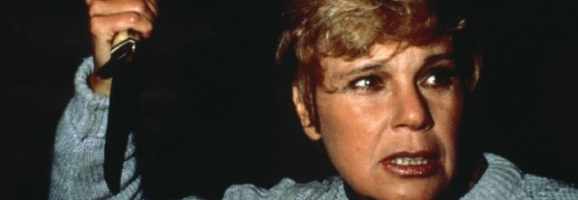
There are some scary mothers in horror film. After the recent release of Guillermo Del Toro’s Mama I began to wonder, what is it that scares us so much about mothers? What makes motherhood a good subject for horror? Could it be the rap over the knuckles we got as children for being impolite at the dinner table, the grounding we got for breaking curfew or the scariest moment in conversation you’ll ever have… “I’m not angry, I’m just disappointed”. Horror film has a number of ways of portraying motherhood, I have put together a list of the types of mothers that you may see in horror.
How have I done this? ‘Mothers Who Kill’ such as Mrs Madeline Matheson (Jordan Ladd) of Grace and Mrs Pamela Voorhees (Betsy Palmer) of Friday the 13th are defined firstly in terms of the cultural and social understanding of what it is to be a ‘good mother’ and secondly the extent they will go to in order to be a ‘good mother’. Caroline Knowles discusses the creation of the ways to measure motherhood by virtue, ‘(t)he good mother is an administrative invention in child abuse narrative, the means by which the bad mother is identified and reformed. Without the bad mother she would not exist…’ (1996, pg 116). So, in order to ascertain what it entails to be a ‘good mother’, one must first define what it is to be a ‘bad mother’. In no particular order, I have identified the Vengeful Mother, The Perfectionist, The Controlling Mother, The Collector and The Sick Mother. ‘Good mothers’ then are psychologically stable and kill to protect their children and ensure their survival.
6. The Vengeful Mother – Friday the 13th
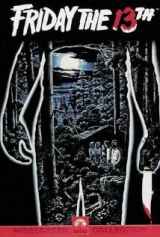 Pamela Voorhees is the eternal avenging mother of this film. In the final scenes of Friday the 13th, the faceless killer is revealed to be Mrs Voorhee’s; a kindly looking woman in a cable knit sweater. She tells Final Girl Alice about the trouble that comes along with the reopening of Camp Crystal Lake each summer, giving away her motivation to kill:
Pamela Voorhees is the eternal avenging mother of this film. In the final scenes of Friday the 13th, the faceless killer is revealed to be Mrs Voorhee’s; a kindly looking woman in a cable knit sweater. She tells Final Girl Alice about the trouble that comes along with the reopening of Camp Crystal Lake each summer, giving away her motivation to kill:
“Did you know a young boy drowned. The year before those two others were killed. The counsellors weren’t paying attention! They were making love while that young boy drowned! His name was Jason. I was working the day it happened. Preparing meals. Here. I was the cook. Jason should have been watched! Every minute. He was… he wasn’t a very good swimmer. We can go now dear.”
Mrs Voorhees then has flashbacks to her drowning helpless son and becomes enraged, striking out at Alice and beginning the final chase – which ends with Mrs Voorhee’s decapitation. The moralistic undertone of this act is indicative of the strong anti-sex messages popular in the early slasher films of the 1970’s (carrying on into the mid 1980’s): sexual activity in teens is negligent and abstinence is associated with responsibility and purity.
She is the eternal avenging mother because her protection extends beyond that of Jason. Mrs Voorhee’s tried in 1962 to keep the camp closed by poisoning the lake water and in other years lit a number of fires to destroy the camp. After avenging her child in 1958 by killing the fornicating counselors who neglected Jason, Mrs Voorhee’s did not kill again until the camp was nearly reopened in 1980 by Steve Christy. Although she is clearly psychologically unhinged through grief over the loss of Jason, her reasons to keep the camp closed are understandable: young camp counselors are too concerned with sexual fulfillment and consuming drugs and alcohol to be responsible caregivers. Her victims in this narrative all engage in either sexual intercourse or have drugs or alcohol in their system, demonstrating their irresponsibility and possible ineffectiveness as child supervisors.
The look of heartache in Mrs Voorhee’s eyes, framed in close up, position her as a character deserving of empathy to some extent. Her face in recall of the tragic loss of her son is transformed by despair, lingering in her expression even when she chases Alice. Cunningham focuses much of the camera shots on the body and expressions of Mrs Voorhees after she is revealed as the killer, not so much to make up for a lack of screen time earlier in the film, but to present her as human. Mrs Voorhees does not possess exceptional strength, speed or any supernatural power other than the maternal drive to protect – Unlike her superhuman, monstrous son in the sequels.
As a sidenote, other examples here include films such as Inside and Scream 2.
5. The Controlling Mother – Mother’s Day (1980), The Baby
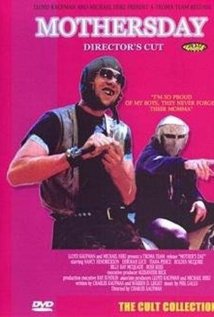 These horror film mothers are manipulative and domineering: controlling their children and those around them. In the original version of Mother’s Day Mother coaxes her sons into kidnapping raping, torturing and killing pretty young women. Out in the wilderness, Mother and her redneck sons spend the day “training” to be strong protectors for Mother and to kidnap their “playthings” more effectively.One memorable scene includes the boys putting a show on for mother, dressing their women up and pretending to sneak up and attack them – over and over, all for the amusement for Mother.
These horror film mothers are manipulative and domineering: controlling their children and those around them. In the original version of Mother’s Day Mother coaxes her sons into kidnapping raping, torturing and killing pretty young women. Out in the wilderness, Mother and her redneck sons spend the day “training” to be strong protectors for Mother and to kidnap their “playthings” more effectively.One memorable scene includes the boys putting a show on for mother, dressing their women up and pretending to sneak up and attack them – over and over, all for the amusement for Mother.
The Baby is an interesting film, Ann Gentry (Anjanette Corner) is a social worker takes up the case of a twenty-something year old man who lives as an adult baby. He is mentally impaired and his Mother and sisters are abusive and controlling. Ann tries to teach Baby to act within his age group. She teaches him to walk rather than crawl around but Mrs Wadsworth does not like this at all and takes a cattleprod to Baby, “Baby does not walk!”. Watching David Manzy’s screw up and make the sounds of a baby is too entertaining to pass up – neither is the twist at the end!
4. The Perfectionist – Serial Mom, Mommy
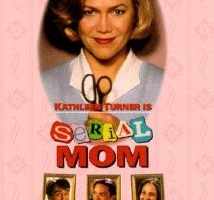 These mothers (like any mother) believe that their children are perfect angels. Unlike most other mothers though, if they hear any differently they’ll kill over it. Kathleen Turner is the perfect mother. So perfect that if there is any kind of slight, criticism or insult again her or her family, she will kill over it. Her first murder includes her running her son’s teacher over after he questioned the strength of the family unit and suggested therapy to cure her son’s morbid obsession with horror films (not that there is anything wrong with horror film obsession!). From there, the violence escalates – even wearing white shoes after Labour Day will get one’s head beaten in.
These mothers (like any mother) believe that their children are perfect angels. Unlike most other mothers though, if they hear any differently they’ll kill over it. Kathleen Turner is the perfect mother. So perfect that if there is any kind of slight, criticism or insult again her or her family, she will kill over it. Her first murder includes her running her son’s teacher over after he questioned the strength of the family unit and suggested therapy to cure her son’s morbid obsession with horror films (not that there is anything wrong with horror film obsession!). From there, the violence escalates – even wearing white shoes after Labour Day will get one’s head beaten in.
Mommy is a very similar kind of story, Patty McCormack (remember her as the creepy little girl in The Bad Seed?) Is the mother of an eleven year old honours student. When her daughter does not get the student of the year award, mother decides to set the record straight with the unfortunate teacher.
3. The Sick Mother – Baby Blues
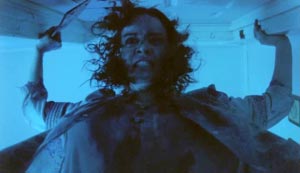 This is one thing that horror films tend to do that drives me up the wall. The seriousness of untreated mental illness is brushed under the carpet in favour of being equated with intrinsic evil killer instincts. Based off the woman who drowned her children in the bath tub in America, Baby Blues follows an overtired, bored, unfulfilled mother who just cracks under the daily pressures and tries to kill all of her children. It is one of those films that could have had a lot more impact if it had not glazed over the legitimacy of mental illness and turned this into a shallow slasher film.
This is one thing that horror films tend to do that drives me up the wall. The seriousness of untreated mental illness is brushed under the carpet in favour of being equated with intrinsic evil killer instincts. Based off the woman who drowned her children in the bath tub in America, Baby Blues follows an overtired, bored, unfulfilled mother who just cracks under the daily pressures and tries to kill all of her children. It is one of those films that could have had a lot more impact if it had not glazed over the legitimacy of mental illness and turned this into a shallow slasher film.
Mama could certainly be considered as part of this category also, even though she is a spirit. It was her insanity that caused her to escape the sanitarium, steal back her child and try to die with the infant. It is her insanity that makes her spirit murderously jealous of anyone who comes into contact with her new found children too.
2. The Collector – Mum and Dad, People Under the Stairs
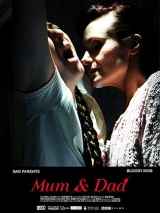 The Mothers at the center of these narratives are unable to have children, or at the least healthy children, and instead “collect” children. In the case of Mum and Dad and People Under the Stairs the children are collected so that the parents can satisfy their urges to firstly have the feeling of nurturing a child and secondly to satisfy their sadistic impulses. Mum and Dad is particularly gruesome (not near as camp as Wes Craven’s film), They use their brainwashed “adopted” children to kidnap a new addition to their family from the airport, Lena. If Mum decides that she likes the new addition, all they have to do is let Mum “draw” on them – using a scalpel. If they are naughty….then they have to face Dad.
The Mothers at the center of these narratives are unable to have children, or at the least healthy children, and instead “collect” children. In the case of Mum and Dad and People Under the Stairs the children are collected so that the parents can satisfy their urges to firstly have the feeling of nurturing a child and secondly to satisfy their sadistic impulses. Mum and Dad is particularly gruesome (not near as camp as Wes Craven’s film), They use their brainwashed “adopted” children to kidnap a new addition to their family from the airport, Lena. If Mum decides that she likes the new addition, all they have to do is let Mum “draw” on them – using a scalpel. If they are naughty….then they have to face Dad.
1. The Good Mother: Grace
 Madeline is a ‘Mother Who Kills’ who is motivated by love for her infant to kill in order to protect her child. The infant, Grace, was believed to be dead inside Madeline’s womb after Madeline was injured in a car accident that claimed her husband’s life. Madeline was determined to have a natural birth, despite the dead baby inside of her. She carried Grace to term, birthing the infant corpse.
Madeline is a ‘Mother Who Kills’ who is motivated by love for her infant to kill in order to protect her child. The infant, Grace, was believed to be dead inside Madeline’s womb after Madeline was injured in a car accident that claimed her husband’s life. Madeline was determined to have a natural birth, despite the dead baby inside of her. She carried Grace to term, birthing the infant corpse.
The audience sees through midwife, Patricia Lang’s (Samantha Ferris) surveillance camera a heart wrenching scene showing Madeline cradling the dead baby, beseeching it, ‘you’re so little. Do you know how much I want you to stay? Please stay’. Patricia, torn by Madeline’s grief rushes down to the tub, ‘Maddy, you can’t will a baby back to life’, but Grace is alive and nursing at Madeline’s breast. The first interactions between mother and child are inexplicably powerful; so compelling within this film fiction that a child is yearned back to life.
Much of the film concerned with nourishment and the importance of bodily health and function. Madeline is a vegan, so already very conscious of the importance of dietary needs. When it is revealed that Grace can only be sustained by blood, or she will begin to decompose, Madeline does everything in her power to nourish the child. She tries the blood of dead cow meat which Grace rejects. Grace will only accept human blood, which for most of the narrative is painfully extracted from the breast of Madeline. The Dr Sohn (Malcom Stewart) and Vivian Matheson (Gabrielle Rose) side narrative within Grace culminates into the crux of Madeline’s motivation to kill. Vivian Matheson is Madeline’s mother-in-law and nest-bare with the loss of her son is the typical ‘bad mother. She is obviously psychologically unstable (flies into rages over trivialities and shows signs of obsessive compulsive tendencies) and harbors desperation for the maternal to create an identity for herself rather than for nurturance. As Barbara Creed’s reading of Julia Kristeva suggests, ‘She sees the mother-child relation as one marked by conflict: the child struggles to break free but the mother is reluctant to release it’ (1986, pg72). Vivian was unable to let her son become totally independent in life, making decisions for him still, and cannot let go of him in death either.
Kristeva’s theory argues that keeping the child close, that the relationship validates the mother’s own existence and identity which is why she does not want to release the child. Without her son, Vivian is no longer a mother and so, has no identity. Using Sohn to deem Madeline to be an unfit mother, Vivian conspires to steal Grace. I won’t give away the very bloody battle, pitting mother against mother that ensues.
Motherhood in film is not a new concept, the fear surrounding the physicality of motherhood was explored in Rosemary’s Baby, deviant mothers have been in drama and thriller films since the 1940’s (An American Crime, Mommy Dearest, Jack Ketchum’s The Girl Next Door, Now, Voyager, Ordinary People). Bad motherhood in horror is generally used as a foundation for murderous offspring (Psycho, Cherry Falls) but at the center of horror, the bad mother can either turn your stomach or function as an over the top laughing stock (Strait-Jacket, Frightmare, Dead Alive). The warped maternal instinct is an interesting subject, there have been a lot less camp portrayals of motherhood in horror in the last decade – which I’m pleased about. In a genre that is about the excess of bodies (blood, urine, feces), the maternal body should be used for maximum impact and maximum scares.
What do you think? Leave a comment.











Great essay! Another interesting portrayal of ‘evil’ mothers are them being the source of the violence. Have you watched ‘The Skin Inside Her’? While the plot doesn’t make it obvious that it’s her fault, it portrays her as this mother that created two monsters…
No I haven’t that is quite an interesting story line though. I will have to give it a look 🙂 Thanks!
On the contrary to most people, I usually find something good in every horror movie I see. But with Grace, I failed entirely to find anything good. It’s very slow and has a complicated plot that never delivers. Obviously the writer/director is sick with serious trouble towards motherhood and breasts. Lesbian wife, horny mother in law, vampire infant, corrupt Doctor, severed tits and sticky flies. Nothing makes sense. It’s horror for the hell of it and it never gives you any scares, just disgust and shock for how far these people can go. This is a dedication to bloody nipples and vaginal bleeding. Nothing more.
When I watched Grace I was knee deep in Barbara Creed’s ‘The Monstrous Feminine’ and some of Kristeva’s abject. Reading texts that is so engrossed in the maternal female form as a site of uncannyness and otherness and then watching a film that uses the female form as the site of narrative – it just seemed to gel really well and make sense to me. I could appreciate it because of where I was in my studies. I think that Grace is a kind of “frame of mind” film, you need to have the right one to get into it.
Wow, what an article! I have not seen any of these movies…and I am scared to. I don’t want to be scared of my mom!
You’re not a little scared already? You mustn’t have been told off often enough :p. Like I said at the end of the article the Maternal horror films are either very camp or quite horrific… Maybe begin with camp?
Terrific article Kahlia. ‘The scariest conversation you;ll ever have’ line was a ripper.
Thank you very much! 🙂
This is very insightful. Although I’ve always known that mothers and feminine imagery played an important role in several horror films, having not seen many of the ones mentioned here, I was not fully aware of how widespread and different each take on the subject was. I particularly liked that you touched on the treatment of mental illness and the excess of flesh and bodies that are a mainstay of the horror genre. Grace, in particular, sounds pretty incredible with how it contrasts the life giving qualities of flesh against the death and carnage that often follow.
brilliant article. “The seriousness of untreated mental illness is brushed under the carpet in favour of being equated with intrinsic evil killer instincts.” It’s so true and I think one of the reasons for/consequences of (what came first..?) peoples’ fear of mental illness.
I think it has something to do with some of the more archaic beliefs that the uterus was directly linked to hysteria. So women and mental illness tended to go hand on hand and the horror genre has successfully exploited this. I just think that there needs to be a better handling of it. The Uninvited I think was a bit more tasteful about this (ripped off from Sisters anyway)
Interesting article! Have you every seen The Brood? Lots of mommy issues there. It would probably fall under the “Sick Mother” category. It would be interesting to look at the father archetypes in horror films as well.
Hi Liz, thanks for your feedback. I have seen The Brood, very creepy womb-monster horror isn’t it. It is funny you mention that, I am working on Male archetypes and gender performance in my thesis at the moment and as it turns out it is a whole other world altogether! It all depends on whether you look at it from the killer, victim or hero perspective.
Excellent work on looking at how horror movies portray violent maternity. It reminds me of how they often portray pregnancy in a frightening light (Rosemary’s Baby, Inside, etc.).